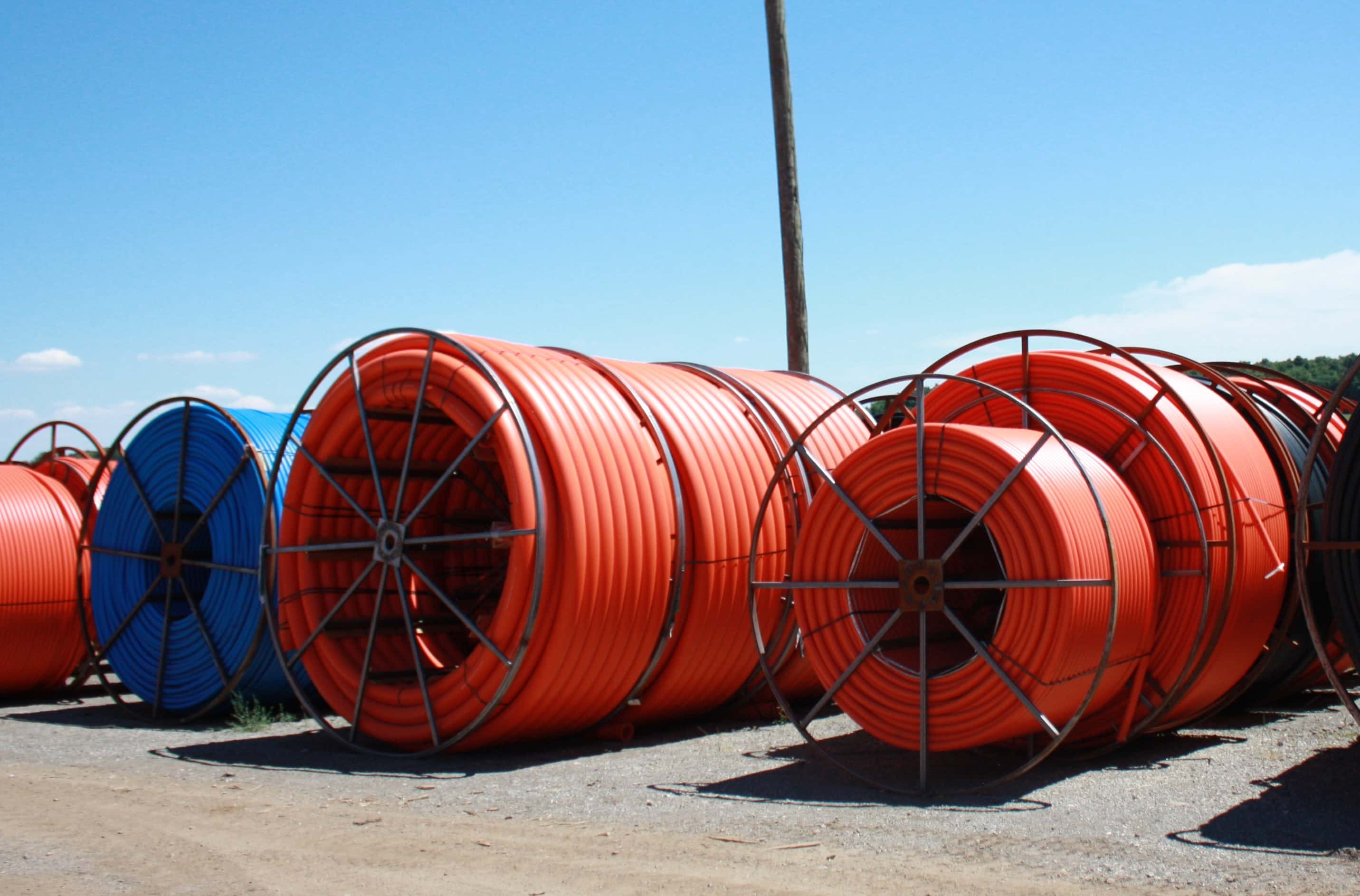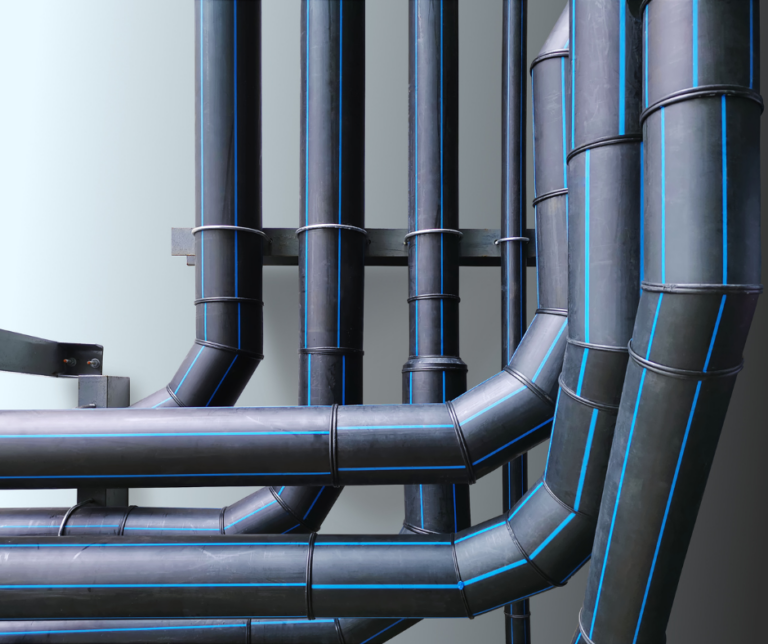Explore the Manufacturing Process Behind High-Quality HDPE Pipeline and Its Applications
The production process of high-quality HDPE pipes is intricate and systematic. It begins with the option of basic materials that boost performance. Following this, ethylene undergoes polymerization to form resin, which is then shaped through extrusion. Quality control is extremely important, guaranteeing that the final product fulfills stringent requirements. However, the journey of HDPE pipelines doesn't finish with production. Their applications across numerous sectors reveal a wider relevance worth taking a look at.
Recognizing HDPE: Properties and Advantages

High-density polyethylene (HDPE) is a versatile thermoplastic recognized for its durability and resistance to different environmental elements. This product exhibits exceptional tensile stamina, making it appropriate for requiring applications. Its low-density framework contributes to a lightweight item, helping with ease of handling and installation. HDPE also showcases amazing resistance to chemicals, which decreases deterioration when exposed to extreme materials.
The product's reduced dampness absorption even more improves its longevity, making it ideal for usage in pipelines and storage containers. Additionally, HDPE is resistant to ultraviolet (UV) radiation, guaranteeing that items preserve their stability even when revealed to sunlight. Moreover, its adaptability permits for the production of detailed shapes without endangering strength. The environment-friendly nature of HDPE, commonly stemmed from recycled products, contributes to its appeal, advertising lasting practices in manufacturing. Overall, these residential or commercial properties and advantages make HDPE a recommended selection for different industrial and consumer applications.
Resources Selection for HDPE Manufacturing
The choice of basic materials for HDPE manufacturing is vital to validate the end product meets the desired requirements and high quality requirements. High-density polyethylene (HDPE) is mostly generated from polymerized ethylene, derived from nonrenewable fuel sources such as natural gas or petroleum. The top quality of these feedstocks greatly affects the mechanical and thermal residential properties of the last HDPE.
Ingredients additionally play a considerable role in enhancing HDPE's performance, including antioxidants, UV stabilizers, and colorants, which enhance resilience and resistance to ecological elements. The choice process should take into consideration not only the chemical structure of the raw materials yet likewise their processing features to ensure effective production.
The sourcing of raw materials should prioritize sustainability and compliance with environmental guidelines, as liable practices are critical in today's market. Eventually, careful resources choice lays the structure for generating high-grade HDPE pipelines appropriate for varied applications.
The Extrusion Process: Forming HDPE Pipe
The extrusion process plays a vital role fit HDPE pipelines, starting with precise product preparation methods that guarantee optimal circulation and consistency. Just as crucial is the style of the die, which directly influences the final measurements and surface area quality of the pipe. With each other, these variables add greatly to the efficiency and high quality of HDPE pipeline production.
Material Prep Work Techniques
Effective production of HDPE pipelines begins with meticulous product preparation techniques, particularly the extrusion process. Throughout this stage, high-density polyethylene material is first dried to eliminate dampness, guaranteeing excellent circulation attributes. The material is then fed right into the extruder, where it goes through heating and melting, transforming into a viscous state. This heating process is very carefully managed to preserve the material's stability and performance. The liquified HDPE is forced via a die, forming it right into a constant pipeline type. Appropriate temperature management throughout extrusion is vital, as it directly influences the product's residential properties and the final product high quality. When formed, the HDPE pipeline is cooled and reduced to specified lengths, all set for succeeding handling and applications.
Die Design Value
Precision in die layout plays a crucial duty in the extrusion process of HDPE pipelines. The die functions as the final shaping device, straight affecting the pipe's dimensions, wall surface thickness, and surface coating. A properly designed die assurances consistent material circulation, lowering issues such as abnormalities and vulnerable points. The geometry of the die have to be optimized to accommodate the specific residential or commercial properties of HDPE, including its viscosity and thermal actions throughout extrusion. Furthermore, the cooling price of the product as it travels through the die can substantially affect the pipe's architectural honesty. Spending in advanced die innovation is important for manufacturers aiming to generate high-grade HDPE pipelines that fulfill sector standards and client assumptions.
Quality Control Steps in HDPE Production
Various variables influence the top quality of HDPE pipeline production, effective high quality control procedures are vital to assure uniformity and dependability in the final item (Pipe Supplier American Plastics Midland). Secret quality assurance methods include rigorous product evaluation, verifying that the raw polyethylene fulfills well established requirements for pureness and density. Throughout the extrusion procedure, parameters such as temperature level, stress, and cooling time are very closely kept an eye on to maintain dimensional precision and structural honesty
On top of that, post-production testing is vital; producers often carry out hydrostatic tests to analyze the pipeline's strength and resistance to stress. Visual inspections for surface defects additionally enhance top quality guarantee. Certification from pertinent standards organizations, like ASTM or ISO, supplies an added layer of credibility. By executing these detailed quality assurance actions, makers can decrease defects, boost performance, and guarantee that the HDPE pipelines fulfill the specific needs of various applications, inevitably bring about customer satisfaction and count on the item.
Applications of HDPE Pipeline Throughout Industries
HDPE pipes are made use of across various industries because of their resilience and adaptability. In water distribution systems, they guarantee effective shipment, while Continue in wastewater administration, they offer trustworthy remedies for waste transport. Additionally, agricultural watering networks take advantage of HDPE's resistance to deterioration and adaptability, making it an optimal selection for modern farming practices.

Water Distribution Equipments
A substantial number of markets count on high-density polyethylene (HDPE) pipelines for effective water circulation systems. Known for their durability and resistance to rust, HDPE pipes are commonly used in metropolitan water system networks, agricultural watering, and commercial applications. Their light-weight nature assists in very easy handling and installment, reducing labor expenses and time. In addition, HDPE pipes can fit various pressure degrees, making them ideal for both reduced and high-pressure systems. Pipe Supplier American Plastics Midland. The flexibility of the product permits smooth combination right into existing infrastructure, lessening the demand for extensive excavation. Moreover, HDPE's resistance to chemical seeping warranties that the water supplied remains risk-free and tidy, making it a perfect option for keeping the quality of drinkable water across different fields
Wastewater Administration Solutions
Effective water circulation systems additionally pave the means for ingenious wastewater monitoring services, where high-density polyethylene (HDPE) pipelines play a substantial role. Distinguished for their toughness and resistance to rust, HDPE pipes are ideal for moving wastewater in different setups. Their flexibility enables for very easy installation in complicated atmospheres, minimizing the requirement for extensive excavation. Furthermore, HDPE's smooth indoor surface area decreases rubbing, enhancing circulation rates and efficiency. These pipelines are also resistant to chemical leaching, making certain that pollutants do not compromise the surrounding environment. Industries, districts, and therapy facilities progressively count on HDPE pipelines for their reliability and durability, making them a favored selection for contemporary wastewater administration systems. This versatility highlights the critical significance of HDPE pipes across many applications.
Agricultural Irrigation Networks
Agricultural watering networks profit significantly from making use of high-density polyethylene (HDPE) pipes, which provide reliable and dependable water distribution to plants. HDPE More Bonuses pipes are light-weight, making them easy to deliver and set up, while their versatility enables numerous setups in diverse surfaces. These pipelines demonstrate exceptional resistance to rust, chemicals, and UV radiation, making certain longevity in severe agricultural environments. Additionally, their smooth indoor surface reduces friction loss, maximizing water circulation and minimizing power expenses related to pumping. The durability of HDPE pipes, usually going beyond 50 years, adds to lower maintenance and substitute expenses. Consequently, farmers significantly count on HDPE pipes to boost watering effectiveness and advertise sustainable agricultural practices, eventually resulting in improved plant yields and resource preservation.
Future Trends in HDPE Pipe Innovation
As the need for lasting and efficient facilities grows, advancements in HDPE pipe innovation are positioned to change numerous sectors. Arising patterns include the combination of smart innovations, such as sensors and IoT abilities, which facilitate real-time surveillance of pipeline conditions, minimizing maintenance costs and avoiding leakages. Furthermore, the growth of sophisticated production techniques, such as 3D printing, is making it possible for the production of facility, customized pipe layouts that deal with particular job requirements.
The emphasis on recycling and round economic situation practices is driving the advancement of HDPE pipes made from recycled products, improving sustainability. Boosted jointing methods, such as electro-fusion and mechanical fittings, are likewise enhancing setup performance and dependability. Lastly, the growing emphasis on environmental regulations is pressing makers to embrace greener production procedures, guaranteeing that HDPE pipelines not only satisfy market standards but additionally foster a more lasting future for infrastructure development.
Often Asked Concerns
Just How Does HDPE Contrast to Various Other Plastic Materials?
HDPE surpasses many various other plastic materials pertaining to resilience, chemical resistance, and versatility. Its low thickness and high tensile stamina make it excellent for various applications, commonly going beyond choices in both performance and longevity.
What Are the Environmental Impacts of HDPE Manufacturing?
The ecological effects of HDPE manufacturing consist of greenhouse gas exhausts, power usage, and possible air pollution from making processes. Additionally, inappropriate disposal can cause soil and water contamination, increasing issues regarding long-term ecological impacts.
Can HDPE Pipeline Be Reused?
Yes, HDPE pipelines can be recycled. Many facilities accept made use of HDPE for handling, transforming it into brand-new items. This reusing adds to sustainability efforts, reducing plastic waste while saving sources and energy in the manufacturing cycle.
What Is the Lifespan of HDPE Piping?

How Do Temperature Variations Affect HDPE Pipe Performance?
Temperature level variations greatly influence HDPE pipeline performance, affecting flexibility and toughness. Heats can lead to softening, while low temperature levels may trigger brittleness, inevitably affecting the pipeline's resilience and suitability for various applications in diverse environments.